
About Hackstarter
Hackstarter is a grant programme giving inventors at Imperial the ability to make prototypes of their early-stage concepts.
Our award-winning scheme enables students, staff and alumni to go through a structured design process and create physical products in our maker space using traditional and digital prototyping equipment.
Over a ten week programme, selected teams have the opportunity to develop their early stage prototypes in a supportive and inclusive learning environment with the assistance of a £500 grant towards materials costs.
The Grand Final is the showpiece of the programme, where our teams present their innovations to a panel of judges and compete for a follow-on support package.
Visit the Hackstarter page to learn more about the programme.
Hackstarter 2025 Cohort
Meet this year’s participants with exciting product ideas and the potential to develop them into future startups. These innovations addresses challenges across healthcare, fashion, beekeeping and more. Discover their projects and future plans 👇
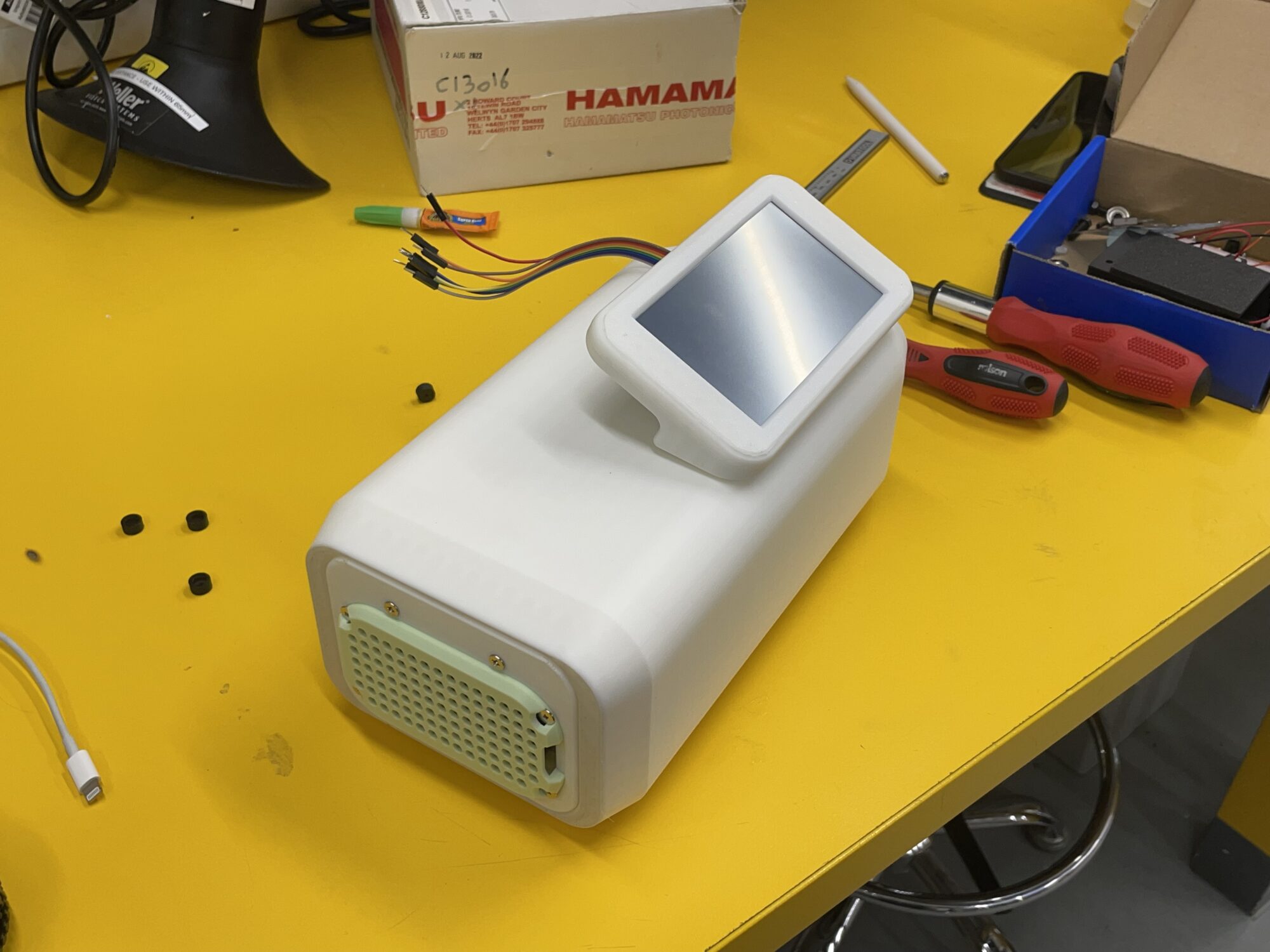
Read More
New research has successfully identified biomarkers of osteoporosis using hair and nail samples. Our novel screening technology provides significant advantages over conventional (DEXA) scans as it uses easily accessible samples for regular testing, has the potential for miniaturisation and does not use ionising radiation (regular screening using DEXA scans is not possible due to the dangers of cumulative radiation dosages).
Title:
Osteoporosis Screening Device
Creator:
Alessandro Liuzzi-Jones
Description:
1 in 2 women and 1 in 5 men are likely to develop osteoporosis in their lifetime, costing the NHS £4.4 billion pounds annually. Despite the tremendous scope of this condition, there are currently no nationalised screening programmes for it. There is a gap in the market for a low-cost, easy-to-use, and rapid osteoporosis screening device.
Using hair and nail samples, this project will develop a solution to enable the early detection and monitoring of osteoporosis – improving treatment options and long-term quality of life for patients. In future, our compact device could be placed in locations such as GP’s and pharmacies, allowing for routine checkups similar to a blood pressure test.
Title:
High-Throughput Liposome Manufacturing
Creator:
Miguel Paez Perez
Description:
Lipid membranes are vital as disease biomarkers (including for cancer, alzheimers, malaria and atherosclerosis), drug carriers and synthetic cell components. However, traditional liposome production is slow and lacks automation, while microfluidic methods are limited in composition range and can introduce contaminants. These constraints hinder the study of complex lipid mixtures, negatively impacting upon biophysical research, diagnostics and therapeutic solutions.
My solution relies on a plate-based extruder to achieve high-throughput vesicle production. This device will allow automated, scalable liposome production, improving data collection for studying membrane biophysical properties and enabling applications in diagnostics, drug delivery and synthetic cell research..

Read More
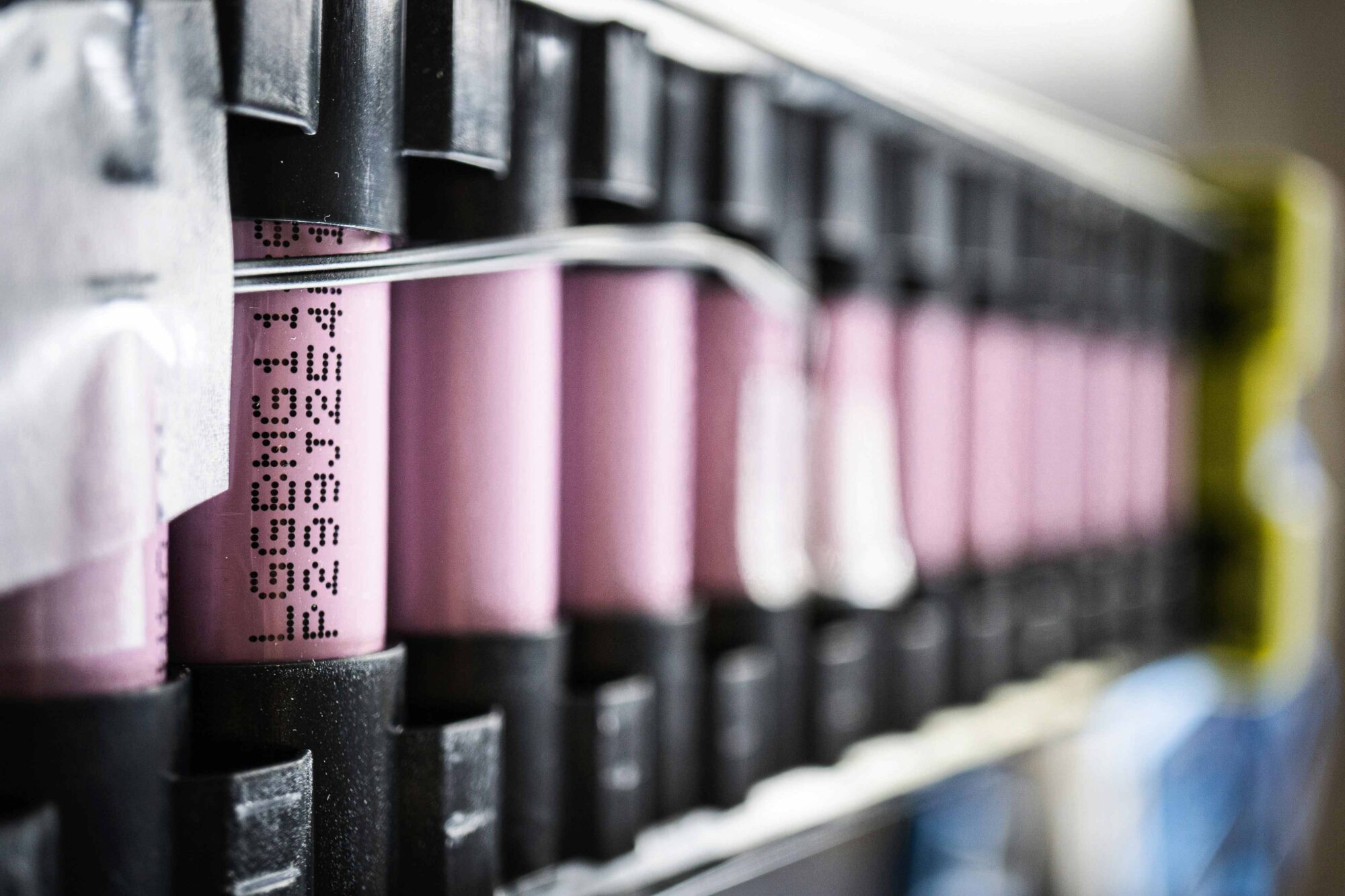
Read More
Title:
Battery Quality Monitoring Scanner
Creator:
Yuankai Ren
Description:
Modern lithium-ion batteries are essential for electronic devices, EVs and aerospace applications but suffer from manufacturing defects and ageing. Because of the sealed battery casing, internal imaging is challenging, with X-ray computed tomography (CT) being the default method – an approach that is expensive, environmentally unfriendly and limited by strict sample-size requirements.
This project explores ultrasound-based techniques to visualise internal battery conditions in the form of a reconfigurable ultrasound scanner capable of providing critical information about battery health and safety. The body of the scanner will be designed and built using Hackspace resources, then mounted onto a UR5 collaborative robot and tested by Imperial College’s Non-Destructive Evaluation research group.
Title:
Lab Grown Fur
Creator:
Daniel Khosravinia
Description:
The fur industry has long relied on fur farms, raising concerns about animal welfare, environmental impact and potential links to disease outbreaks. As fur farming faces increasing bans and consumer demand declines, fashion brands must explore more ethical alternatives. However, current options such as faux fur are made from non-biodegradable plastics, which create environmental concerns, highlighting the need for a sustainable, high-quality alternative.
Lab Grown Fur (LGF) is a sustainable and biodegradable alternative to real animal fur without the need for animal slaughter. Unlike faux fur, LGF contains no plastics or harmful chemicals. Using molecular biology, the components can be synthesized and used to replicate fur structure.
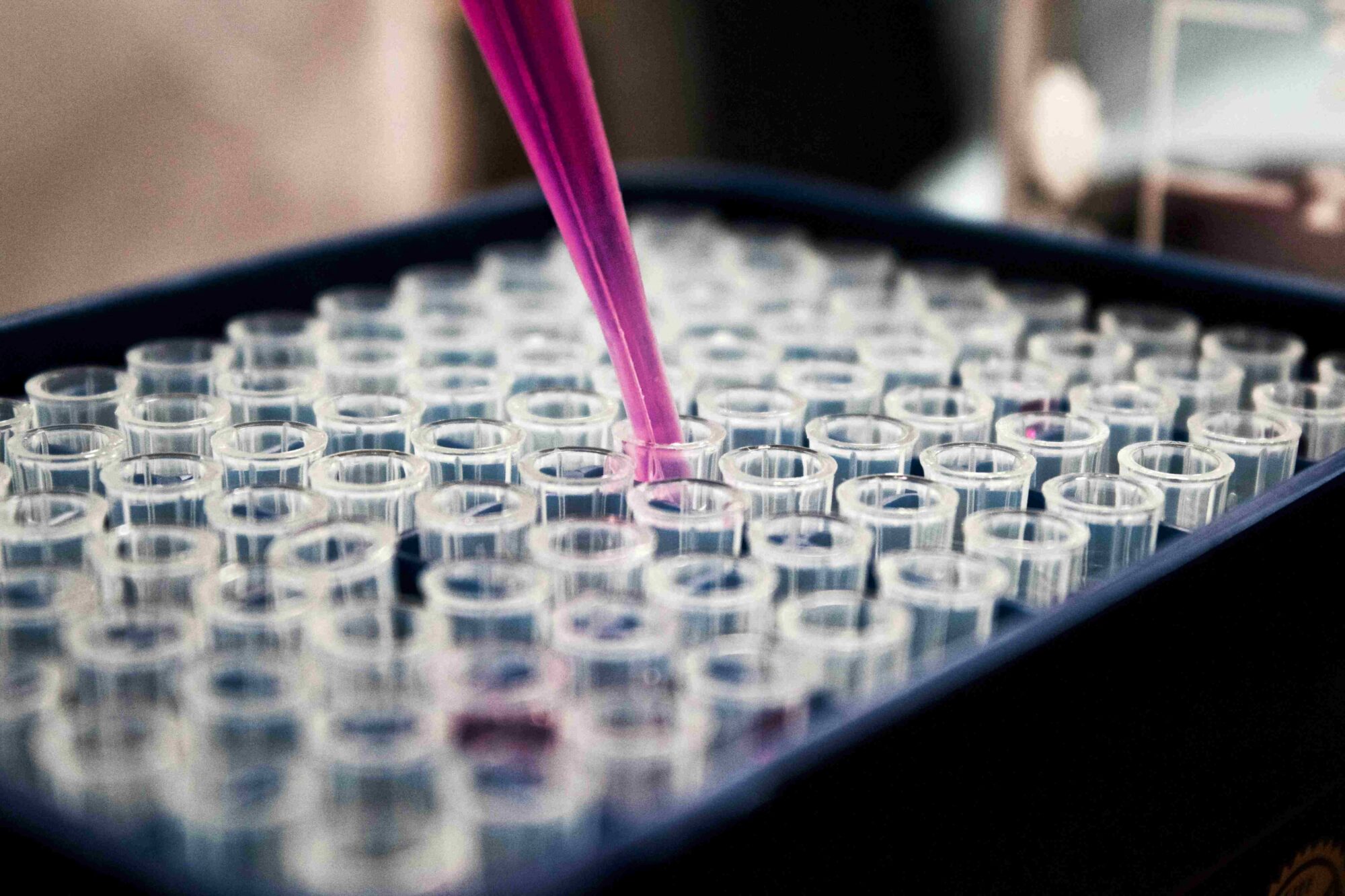
Read More
Lab Grown Fur offers the fashion industry a cruelty-free and environmentally friendly way to achieve the look and feel of real animal fur. Fashion houses that banned fur and those that continue to use corpse-based fur can both benefit from LGF.
Beyond the ethical concerns of animal cruelty, corpse-based fur production contributes to environmental damage, including water and air pollution, high carbon emissions and the use of carcinogenic compounds and heavy metals to treat fur.
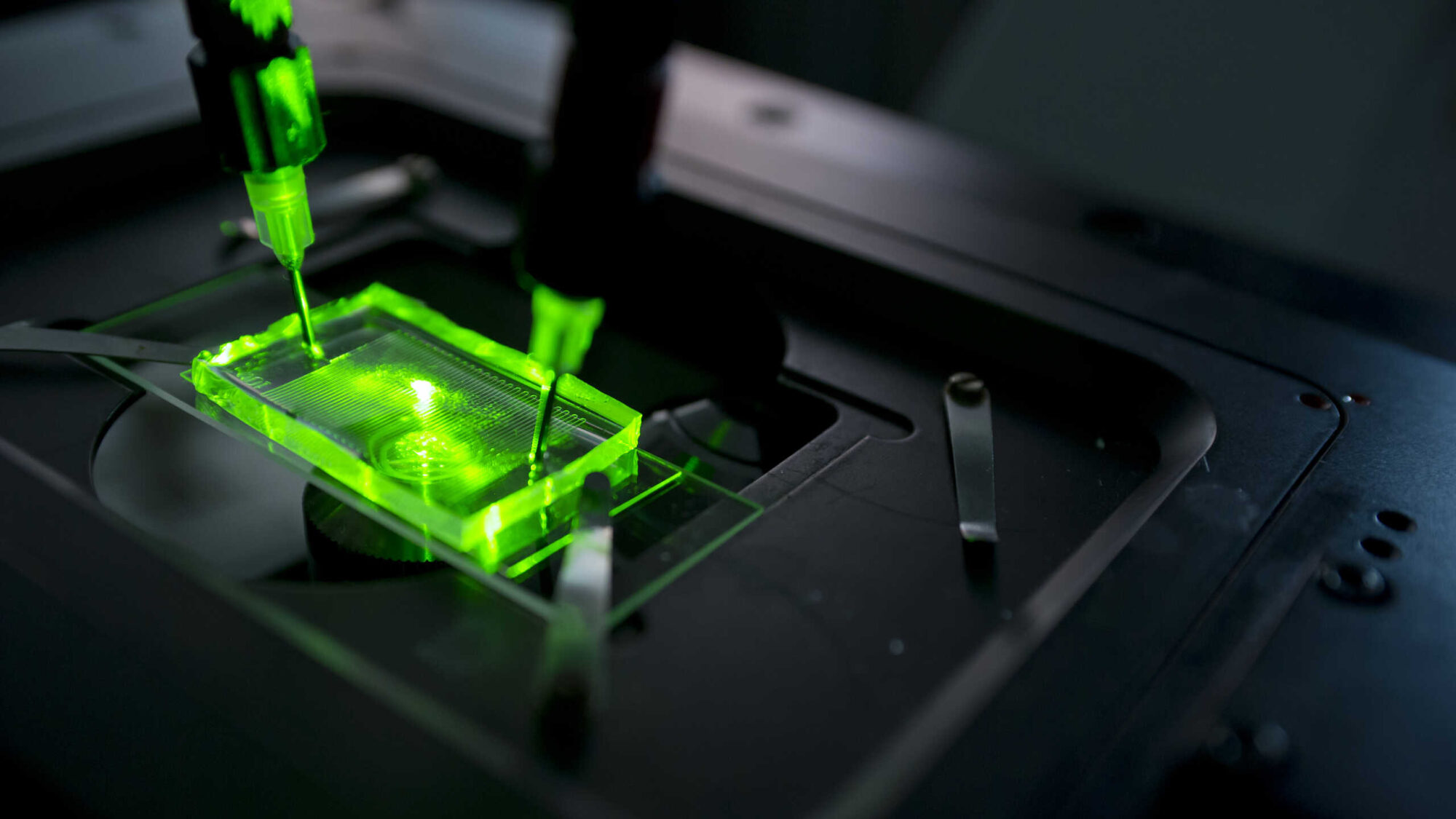
Read More
Title:
Compact Microfluidic Axial Piston Pump
Creator:
Ali Salehi-Reyhani
Description:
Existing microfluidic pumps, such as syringe and pressure-driven systems, have limitations in flow stability, fluid compatibility and efficiency. Syringe pumps are wasteful, have fixed volumes and require complex setups for refilling, while pressure-based systems suffer from flow rate variations as fluid viscosity changes. These limitations have a negative effect on chemical, biological, and healthcare research that makes use of microfluidic chromatography.
Our goal is to develop a compact microfluidic axial piston pump to provide stable, high-precision flow with multi-channel systems across a wide range from low (<10bar) to ultra-high (1200 bar) pressure.
Title:
Mini-Hydrocyclone for High Throughput Blood Separation
Creator:
Bu Te and Team
Description:
Current blood separation methods such as centrifugation, are time-consuming, require skilled technicians, and often result in inconsistent yields and contamination, particularly in platelet-rich plasma (PRP) therapy. Alternative techniques like magnetic-activated cell sorting (MACS) and flow cytometry are expensive, complex and unsuitable for high-throughput applications. There is a need for more efficient and scalable blood separation techniques for use in therapeutic treatments, emergency situations and resource-limited settings.
The proposed mini-hydrocyclone system achieves high-precision blood separation with improved throughput and consistency. It leverages hydrodynamic forces to efficiently separate blood components based on density and size differences, offering a continuous, high-speed alternative to traditional methods. Designed for whole blood processing, it optimizes throughput, consistency and cell viability while reducing reliance on skilled operators and lowering costs.
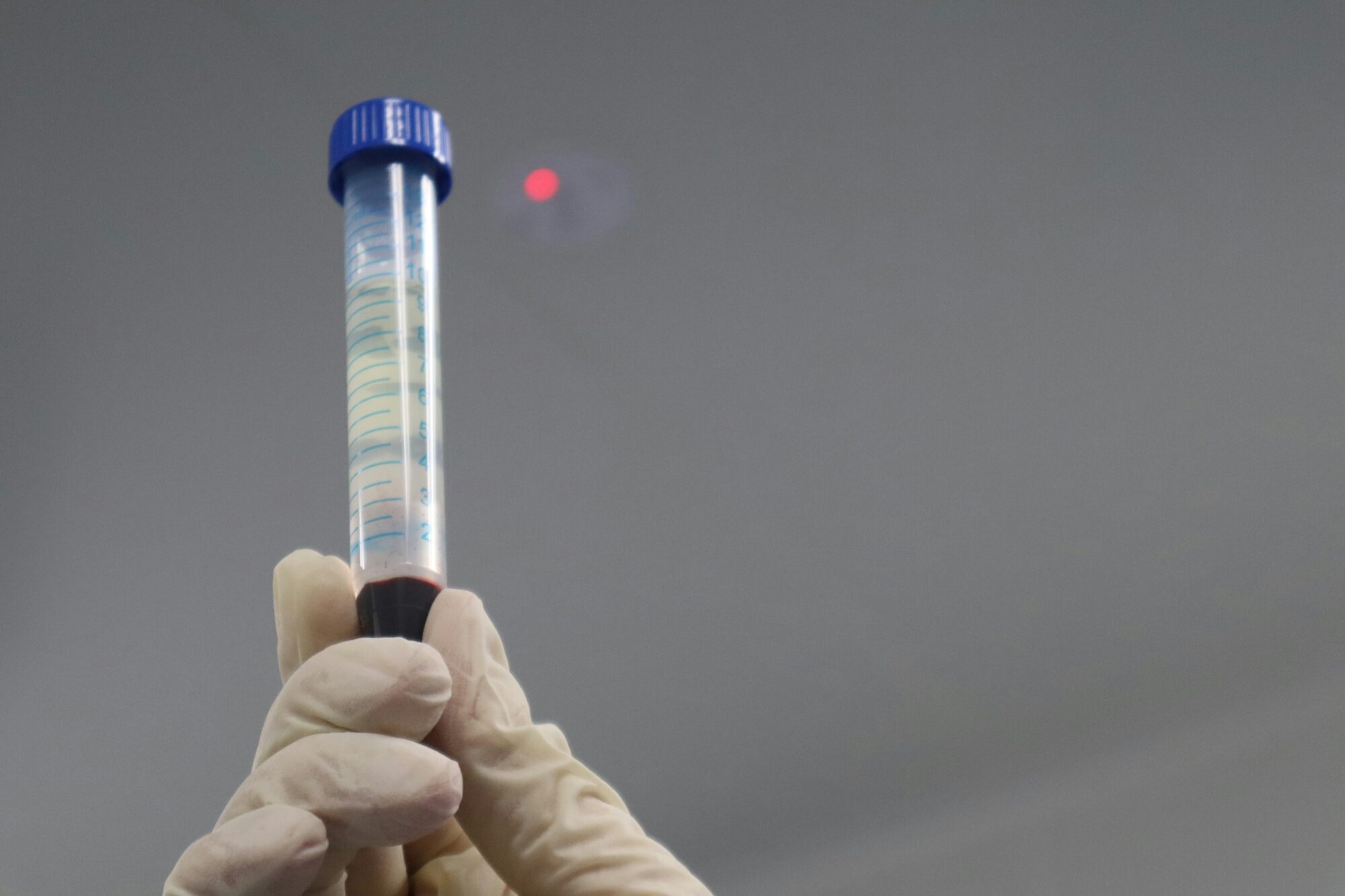
Read More
The mini-hydrocyclone system offers significant benefits across multiple applications. Firstly, it enables more efficient PRP preparation, improving treatment consistency and reducing processing time for point-of-care therapies. In the biopharmaceutical industry, it enhances blood component harvesting, lowering costs and increasing scalability for plasma-based treatments.
Additionally, the system’s portability and scalability make it suitable for emergency and resource-limited settings, improving global healthcare access. By offering a faster, more efficient alternative to centrifugation, this innovation has the potential to transform blood separation processes, making the technology more accessible, cost-effective, and practical for a wide range of medical and industrial uses.
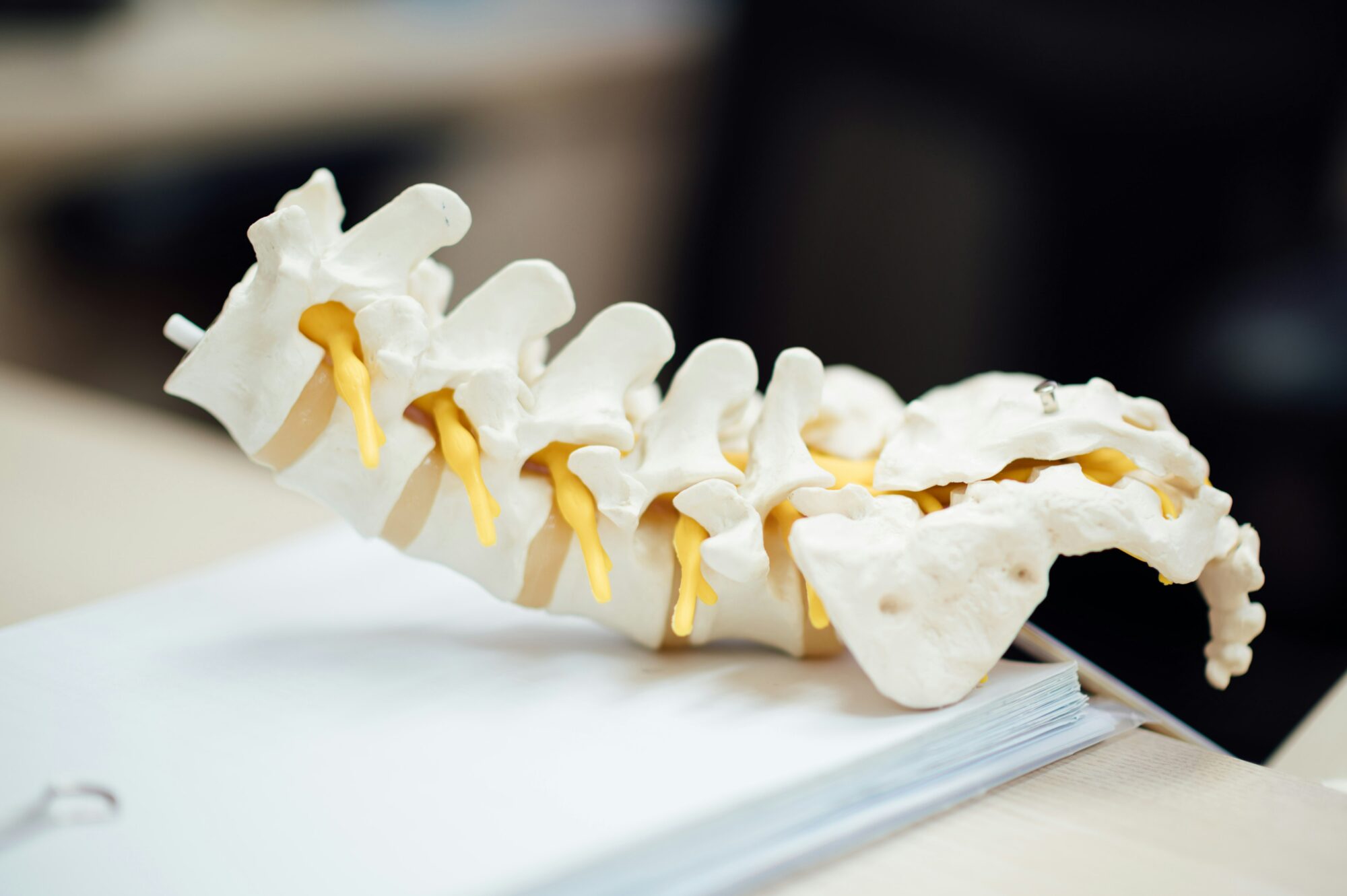
Read More
Title:
Scoliosis Brace Redesign
Creator:
Amira Sheikmohamud
Description:
Traditional scoliosis braces use rigid plastic casings and selectively positioned contact pads to apply corrective forces, which restrict movement and cause skin irritation over time. Constant friction between the skin and brace can lead to discomfort, long-term skin damage and stretch marks. While some braces use softer materials, they still rely on tightening the case around the body with straps, making them restrictive and uncomfortable.
This project proposes a scoliosis brace that replaces contact-based corrective forces with magnetic-spring modules. A two layered flexible vest will replace the stiff case, allowing natural movement whilst applying precise corrective forces. The use of an origami-inspired layer will provide a static mount for the magnet-spring modules.
Title:
“BeeBox” Beehive Monitoring System
Creator:
Jack Elkes
Description:
Beekeepers often struggle to monitor hive conditions effectively, leading to bee health issues and colony losses, especially during extreme weather conditions. Traditional monitoring methods are limited, and there is no centralised system for sharing data or best practices among beekeepers.
This project aims to develop a low-cost, low-power passive hive monitoring system using a compact PCB board with onboard sensors for temperature and humidity. The system measures key parameters of the beehive that are known to impact upon the bee’s health.
The system will be Bluetooth-enabled, allowing data to be transferred to a phone app and stored on a webserver. Beekeepers can track hive conditions in real-time, analyze trends, and receive early warnings of suboptimal conditions.
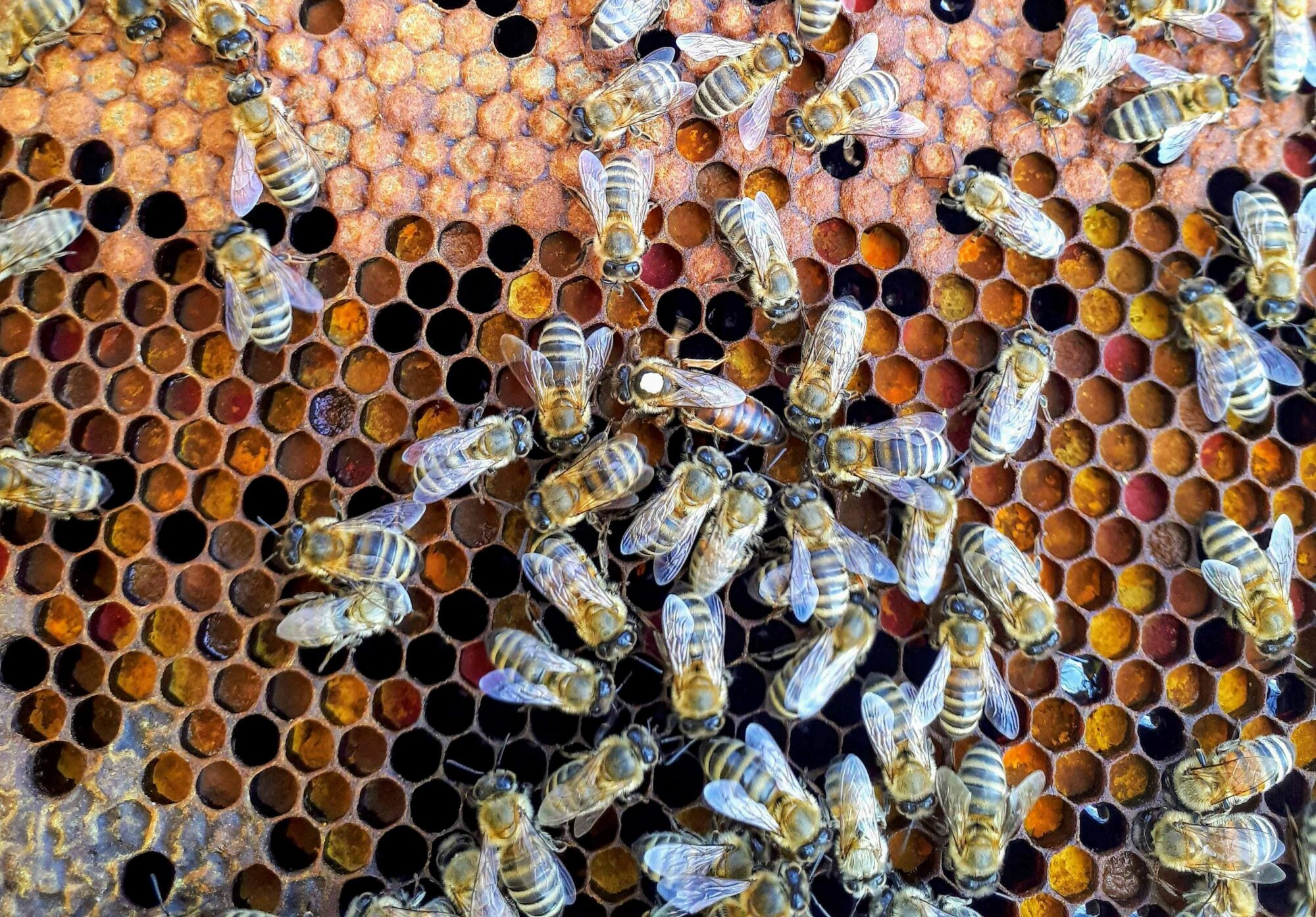
Read More
This project was motivated by our family’s bees dying in two consecutive winters due to extreme cold and wet conditions. The issue was our lack of knowledge of how to keep the bees warm on cold nights.
Unlike existing solutions, this system is mounted directly inside the hive for more accurate readings. A community-focused approach will allow anonymous data sharing, enabling beekeepers to compare hive performance, exchange best practices and improve overall bee health and honey production.

Read More
This project addresses a significant gap in women’s health by providing a convenient tool for tracking hormonal changes at home. My goal is to create an affordable and user-friendly hormone detection solution that empowers women to take control of their health during midlife and beyond. The device has applications beyond menopause, such as fertility tracking, hormone replacement therapy monitoring and stress management.
Title:
MenoSense: Portable Saliva-Based Hormone Monitor for Menopause Health
Creator:
Karina Cheng and Donna Pu
Description:
Women undergoing menopause experience significant hormonal changes that impact mood, metabolism and general health. Traditional hormone testing requires invasive blood or urine samples, lab processing and long wait times – making regular monitoring inconvenient and inaccessible for many.
This project introduces a portable, saliva-based menopause hormone detector using Lateral Flow Immunoassay (LFIA) technology, making it convenient for home use. The device provides fast, non-invasive and accurate hormone readings within just 20 minutes. A handheld reader analyses disposable test strips embedded with fluorescent-labelled antibodies, and results are displayed on both the device and a Bluetooth-connected mobile app, enabling trend tracking and health insights.
Title:
Harnessing Probiotics for Chronic Kidney Disease Management
Creator:
Sung Joo and Zubaid
Description:
Reducing p-cresol and indole production in the gut is a potential therapeutic strategy for managing Chronic Kidney Disease (CKD). Current CKD treatments, such as dialysis, struggle to effectively remove these toxins, highlighting the need for alternative strategies. Uremic toxins p-cresol and indole are produced by gut bacteria (from tyrosine and tryptophan fermentation respectively). Once absorbed into the bloodstream, p-cresol and indole are metabolised into even more harmful compounds, contributing to systemic inflammation, oxidative stress and cardiovascular complications.
This project seeks to enhance the ability of probiotic strains to metabolize p-cresol and indole by exposing them to increasing concentrations while limiting nutrients, promoting beneficial mutations for improved p-cresol and indole degradation.
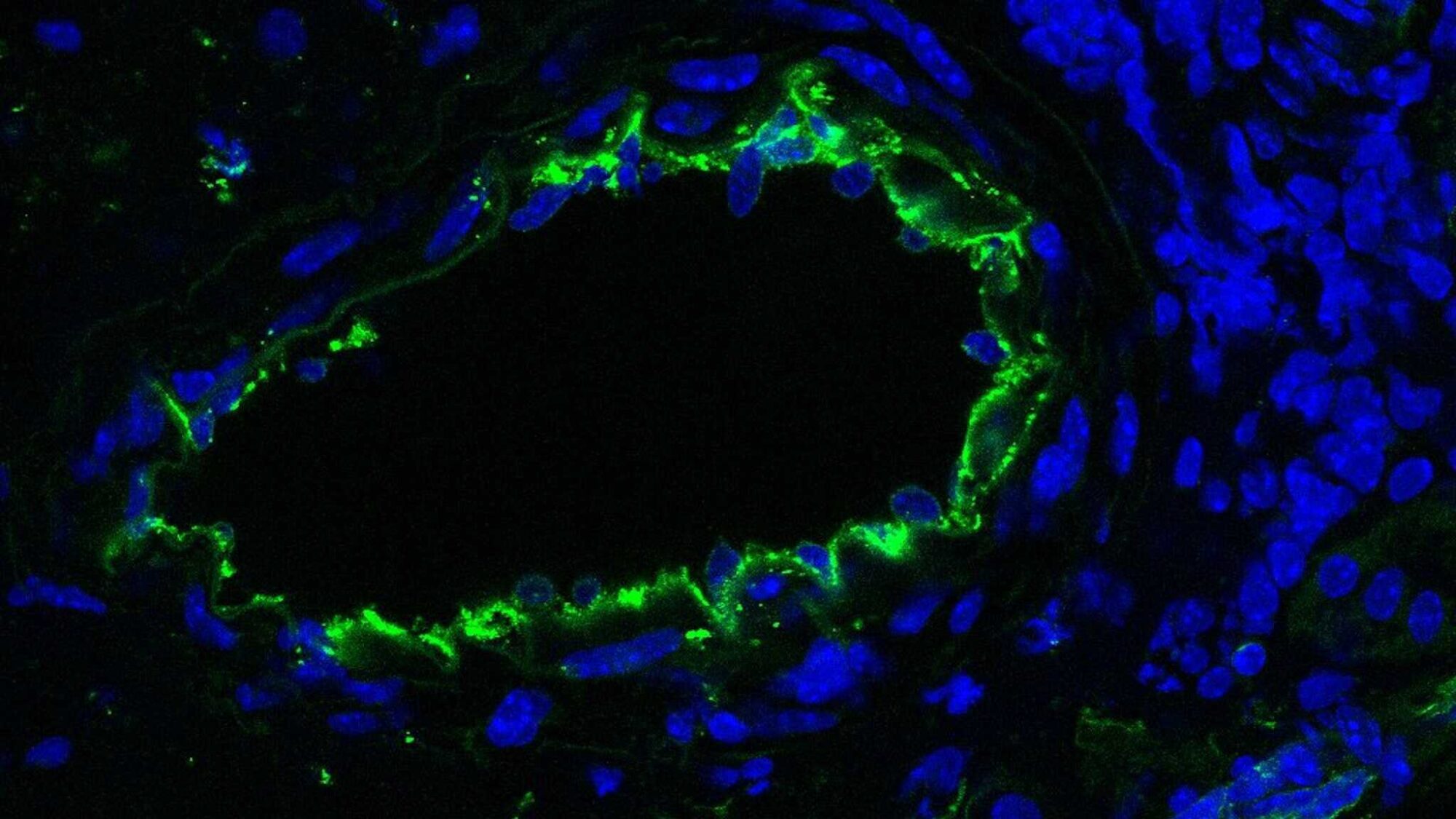
Read More
While not a cure for CKD, this innovation could significantly reduce toxin accumulation, improving patient outcomes and quality of life.
Unlike existing probiotic supplements for CKD patients, this approach uses evolved probiotics with enhanced p-cresol and indole degradation, offering potentially greater efficacy. It will initially focus on breaking down 8–10mM of p-cresol and indole, as CKD patients typically have 1–2mM in their colons. A 4AAP assay and Kovac’s reagent will be used to measure p-cresol and indole breakdown, ensuring the bacteria are actively degrading it rather than simply developing resistance.
Future research will require additional funding for genetic and metabolic analysis (e.g., Next-Generation Sequencing).
Participant Testimonial
“Hackspace has been instrumental in turning our ideas into reality. As an undergraduate student, having free access to these facilities and the opportunity to design and test a project in the lab has equipped me with a valuable set of skills. I am extremely grateful for this experience.”

2025 Grand Final Event
Our cohort of creators showcased their novel solutions at the Hackstarter Grand Final on Thursday 13 March 2025 in White City.
Teams demonstrated their prototypes and pitched for follow-on support. They presented their early-stage prototypes to a panel of judges for the chance to win up to £2,500 in “Hack Credits”. The runner up team also received additional “Hack Credits” to develop their idea further.
Hackstarter judge Nick Jones, Professor of Mathematical Sciences and founding member of Advanced Hackspace, praised the participants:
“The creativity and technical skill on display were impressive, making it difficult to choose a winner. We are confident that these ideas have the potential to progress beyond Hackstarter and look forward to seeing where our talented creators take their innovations next.”
Menosense Wins Hackstarter 2025
A hormone monitoring device has won Hackstarter 2025!
Developed by Karina Cheng and Donna Pu, Menosense is an at-home menopause hormone monitoring device that uses saliva-based testing to provide real-time results. Inspired by Cheng’s mother’s experience with menopause, the team aims to make hormone tracking more accessible and informative.
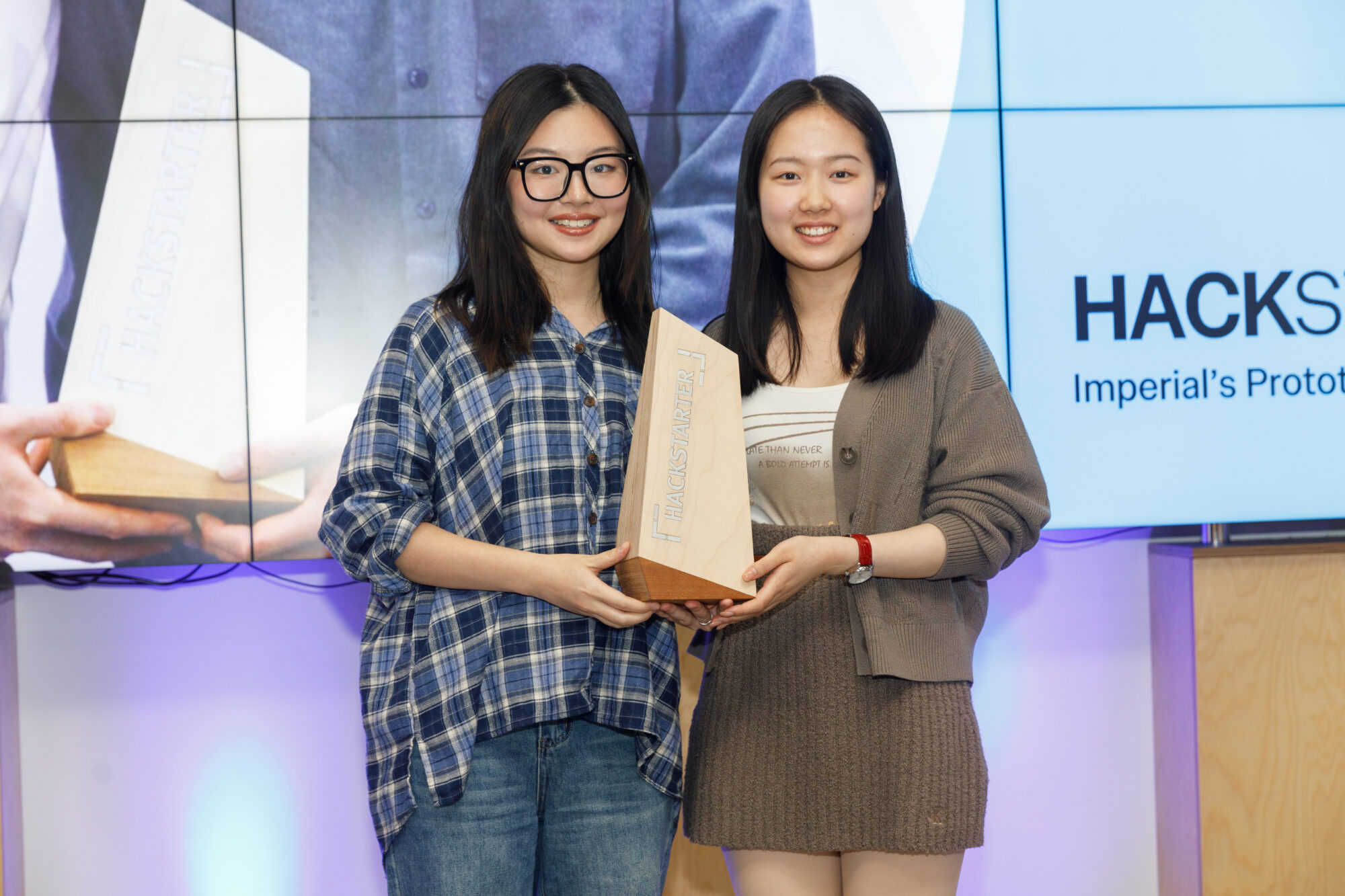
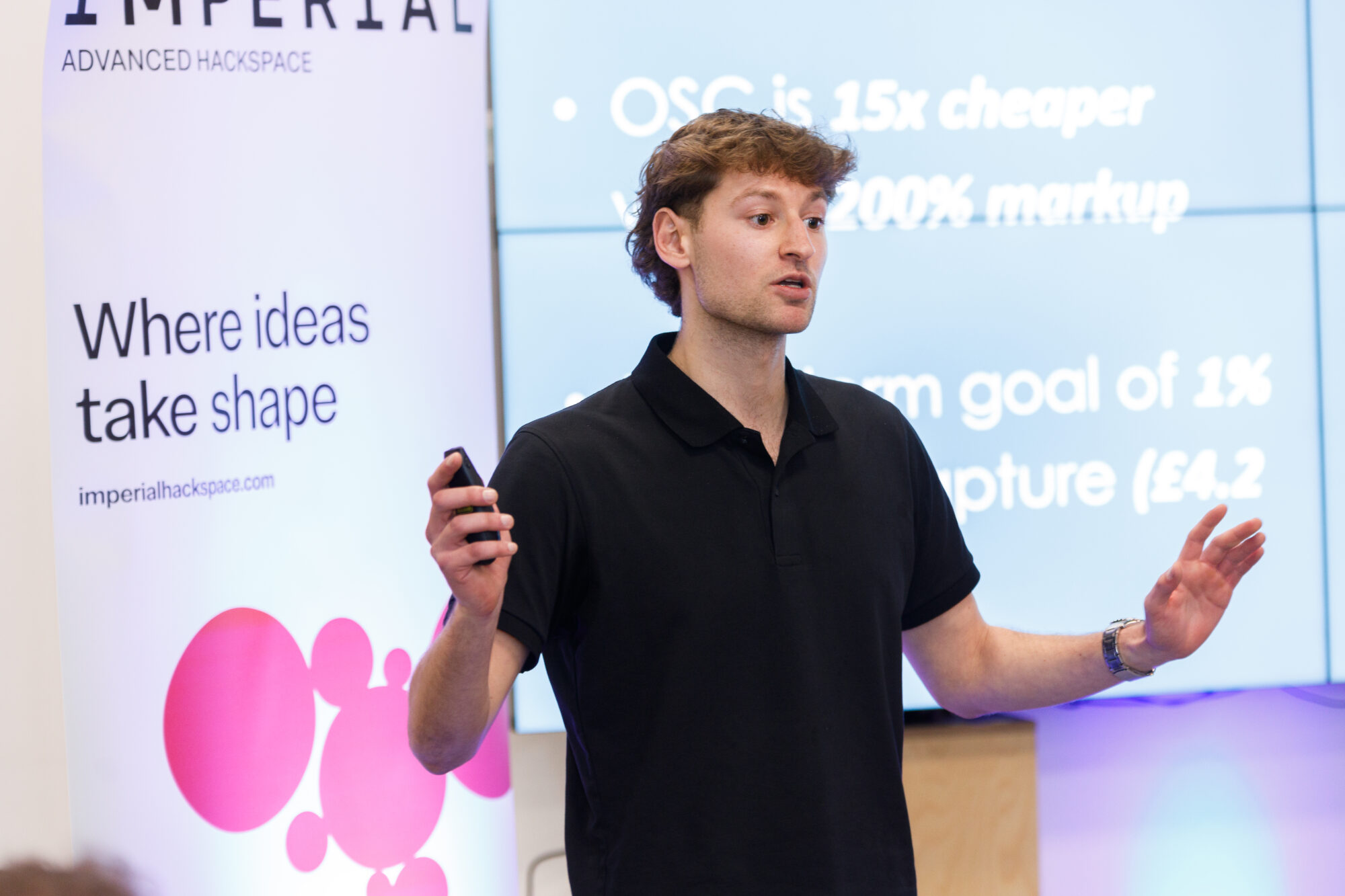
Runner up: Compact Bone Health Scanner
Runner-up Alessandro Liuzzi-Jones, impressed judges with his affordable, compact osteoporosis screening device. Using laser precision technology, his invention has the potential to transform early diagnosis and prevention, addressing a major gap in bone health care.
Special Mention
The judges also commended a project harnessing probiotics for Chronic Kidney Disease Management by Sung Joo and Zubaid. Their work explores probiotic-based toxin reduction as a potential new approach to CKD treatment.
✨ Past Award Winners: Hackstarter 2024
In March 2024, teams presented their original ideas at the Grand Final event, showcasing an impressive standard of work. The speed and creativity with which our Hackstarters advanced their innovations over the course of the intense 10-week programme was nothing short of inspiring. Congratulations to all involved!
Winning Team
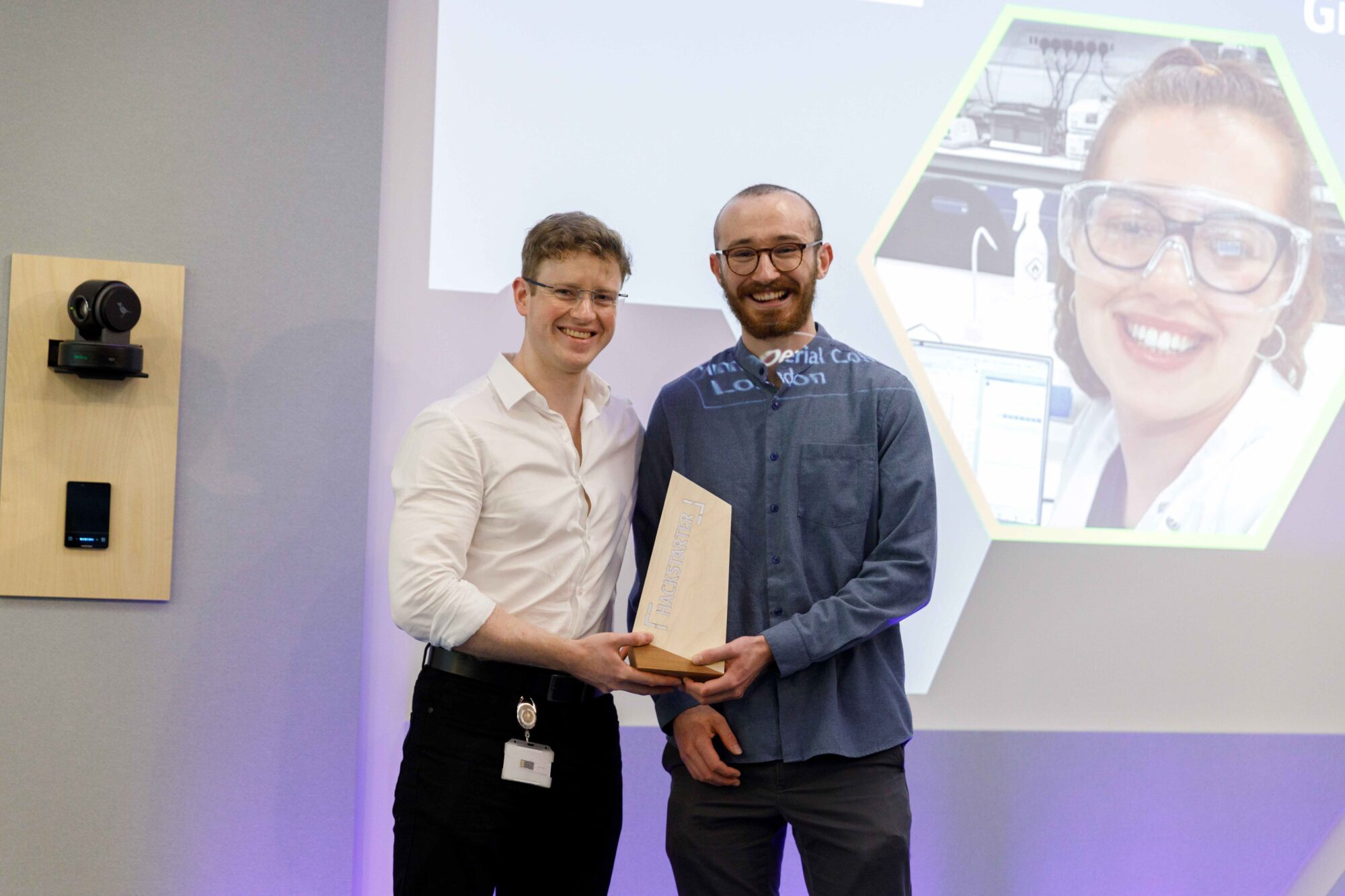
Congratulations to our winning entry, the Microfluidic Device, for taking home the Grand Final prize. As this year’s Hackstarter winners, the project team benefits from a £3,000 grant towards materials costs to further develop their device..
People’s Choice Award

Bravo also to the Interactive Digital Art project for winning the “People’s Choice” award. Their dynamic STEM-based art installation captured our audience’s attention.
List of 2024 Teams
A big thank you to all our participants for sharing their innovations with us:
- Air Quality Monitoring
- Artificial Skin
- Biological R&D
- Ecoflav SPF Protection
- High-pressure Microseparator
- ‘iBrain’ Focus Tracker
- Interactive Digital Art
- Microfluidic Device
- Reciprotect Solution
- Robotise
- T Cell Selector Device
- Treeva Turbine
- Saol Nua
- Sustainable Emollients
- Swimming Turtle Robot
- Vein Visualiser

